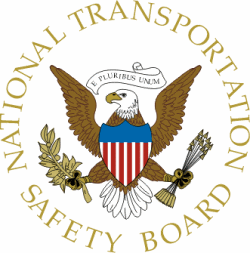Fri, Nov 15, 2013
Hersman: Proposed Rule Goes Beyond The Board's Recommendations Following Investigations
NTSB Chair Deborah A.P. Hersman has written a letter to the U.S. Department of Transportation saying its NPRM for an AD covering thousands of ECi cylinder assemblies goes well beyond the Board's recommendations for inspecting and replacing the cylinders.

In the letter, Hersman said that the Board has worked with ECi and the FAA for many years concerning failures of cylinder assemblies installed on reciprocating aircraft engines. After much research into the failure modes and root causes for certain cylinder head separations on ECi-manufactured cylinder assemblies installed on CMI 520 and 550 series engines, the NTSB issued Safety Recommendation A-12-7 to the FAA on February 24, 2012.
In that recommendation, the Board said that the FAA should:
"Require repetitive inspection of Engine Components, Inc., cylinder assemblies produced between May 2003 and October 2009 (serial numbers 7709 through 52884) installed on Teledyne Continental Motors model 520 and 550 engines and removal of these cylinder assemblies once they reach the engine manufacturer’s recommended normal time (hours) in service between overhauls. (A-12-7)."
"This recommendation was issued to address findings from our investigations and data supplied by ECi in which fatigue cracking of an ECi aluminum cylinder head had initiated in the root of a thread and propagated outward to the point where a majority of the cylinder head separated from a minor portion that remained attached to the cylinder barrel," Hersman wrote. "This head separation causes a significant drop in engine power and possibly engine failure. Repetitive inspection of the cylinder assemblies to detect fatigue cracks before they become critical in size ensures an adequate level of safety for the operator. The proposed rule outlines a failure mode where fatigue cracking initiates between cooling fins and propagates inward to the internal dome radius of the cylinder head resulting in head separation. The NTSB has investigated one case involving internal cylinder head dome cracks in four of six cylinders from an engine1 but has not documented any head separations from such cracking. The NTSB
has not investigated any cases involving engines with cylinder serial numbers ranging from S/N 1 through S/N 1043, nor did concerns about this group of cylinders arise during meetings between the NTSB, the FAA, and ECi to discuss findings related to cylinders within the Group A population."
Hersman said that the proposed AD "would affect many more cylinder assemblies than the NTSB included in our recommendation letter. Because we are not aware of information to support the expanded scope and decrease in compliance time contained in the FAA’s proposed AD, we support FAA action more consistent with NTSB Safety Recommendation A-12-7. If there is additional data to warrant expanding the scope, we encourage the FAA to provide that data and information supporting an expanded scope and compliance time changes in this proposed action.
More News
High Speed Taxiway A long radius taxiway designed and provided with lighting or marking to define the path of aircraft, traveling at high speed (up to 60 knots), from the runway ce>[...]
“If we have a continual small subset of controllers that don’t show up to work… they’re the problem children... We need more controllers, but we need the b>[...]
From 2022 (YouTube Edition): Before They’re All Gone... Humankind has been messing about in airplanes for almost 120-years. In that time, thousands of aircraft representing i>[...]
Aero Linx: National Agricultural Aviation Association (NAAA) NAAA provides networking, educational, government relations, public relations, recruiting and informational services to>[...]
Also: Pilot Age Cap, Skylar AI Flight Assistant, NS-36 Mission, ALPA v Shutdown The federal government has officially gone into lockdown mode. The FAA will be laying off around a f>[...]
 ANN's Daily Aero-Term (10.12.25): High Speed Taxiway
ANN's Daily Aero-Term (10.12.25): High Speed Taxiway Aero-News: Quote of the Day (10.12.25)
Aero-News: Quote of the Day (10.12.25) Classic Aero-TV: PBY Catalina-From Wartime to Double Sunrises to the Long Sunset
Classic Aero-TV: PBY Catalina-From Wartime to Double Sunrises to the Long Sunset ANN's Daily Aero-Linx (10.12.25)
ANN's Daily Aero-Linx (10.12.25) Airborne 10.06.25: FAA Furloughs, Airshows Hit By Shutdown, Livestream Accident
Airborne 10.06.25: FAA Furloughs, Airshows Hit By Shutdown, Livestream Accident



